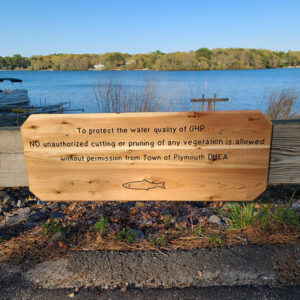Let’s Practice Eco-Friendly Landscaping
By Geri Williams
 Among the goals of an ‘Eco-Friendly Landscape’ are:
Among the goals of an ‘Eco-Friendly Landscape’ are:
- Provide healthy habitat for pollinators and other wildlife.
- Control stormwater on the site and allow it to soak in slowly.
- Conserve water and treat it like the important natural resource it is.
- Create healthy soils without pesticides, fungicides, herbicides, fertilizers.
Some things you can do to achieve this:
- Plant native plants, shrubs and trees. Native species provide biodiversity important for pollinators, birds and wildlife, require no fertilizer and most are drought tolerant.
- Minimize lawn area.
- Create a vegetable garden and compost
- Plant more trees for today and tomorrow. Trees offer home energy savings through shade from hot summer sun and buffering of winter winds. They sequester carbon, clean the air and support a myriad of species of important insects and other wildlife.
- Minimize hard surfaces: instead of traditional asphalt, consider alternatives like porous pave® made of recycled tires; perkcrete® – a permeable concrete; porous asphalt and grasspave® – a grid system that allows grass to grow while providing a stable surface for vehicles.
 If you reside on pondfront property, use environmentally friendly landscaping techniques to prevent pollution and sedimentation, serious causes of pond impairment.
If you reside on pondfront property, use environmentally friendly landscaping techniques to prevent pollution and sedimentation, serious causes of pond impairment.
- Leave as much vegetation on slopes as possible to reduce the velocity of storm water runoff and to filter out sediments.
- Create the largest possible buffer along the shoreline (a minimum of 30’ is recommended) by leaving existing vegetation and rocks and planting small shrubs. This buffer will reduce the effects of storm water runoff and erosion and deter geese from the lawn, while still providing a view of the pond.
- Develop a winding dirt path to your shore or dock. The reduced slope of a winding dirt path generates less erosion and runoff than a steep paved path.
- Do not add sand to your beach area; introduced sand is a major source of sediments and phosphorus.
- If you plan to do construction in an area where the soil will be left unprotected, use hay bales and fabric fences to hold the soil in place.
- Improve your driveway so that storm water is diverted through u-shaped gravel or vegetated ditches that are designed to filter sediments and nutrients.
- Direct runoff towards wooded areas so sediments, toxins and nutrients can be filtered out.
- Work towards a goal of zero runoff from your property.
Be a good steward of your piece of our watershed for a healthier environment for all of us.

Outstanding article; it’s content reminds all who read it that we are a Community, and should all do our part to conserve where we like to be, see and feel – all that surrounds us. Report those without like mindsets who seek to create their own ‘scorched earth’, Dune-world, to the detriment of all who recreate on our watershed waters. Pay it forward.